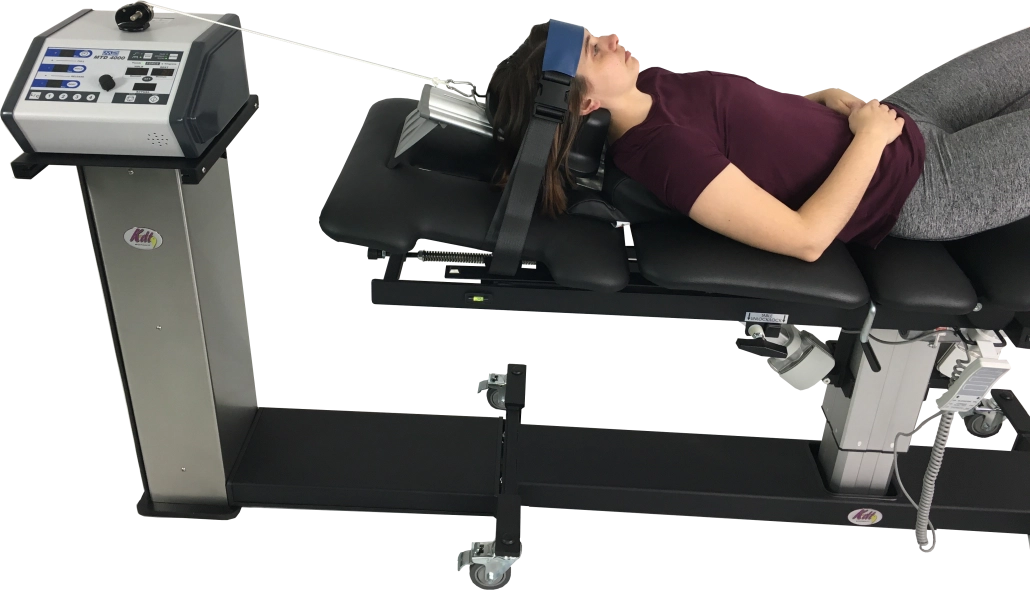Cervical & Spinal Decompression
At APMI Sports Health & Regenerative Medicine we are pleased to provide Decompression Traction Therapy in Chevy Chase, MD. We utilize the latest advanced equipment in every aspect of the care we provide. In providing spinal traction we utilize the Chattanooga Triton dts Spinal Decompression System.
APMI incorporates Non-invasive, non- surgical traction procedures to increase total recovery and long-term relief. Lumbar and Cervical traction therapy effectively treats and helps patients live a pain-free life and return to a more active lifestyle. It relieves back pain by enlarging disc space and creating a vacuum, drawing the soft gelatinous material and reducing the disc herniation.
Traction is the treatment with decompression as the goal
Spinal Decompression Therapy involves a specially designed table attached to an advanced computer module. The distractive (traction) forces performed by the table and unit create decompression (unloading) of the spine improving blood flow and delivering focused treatment to the neck or lower back. The traction head is programmed to deliver gentle stretching creating relaxation of the spine, capsule, and muscles, allowing the injured discs and soft tissue to receive treatment more easily and directly.

Cervical traction:
As with lumbar traction, a patient will remain fully clothed or in a gown. In this instance, a patient will lay on his or her back and their head will be placed into a comfortable device that secures the head just below the ears. The traction device will digitally apply a varying amount of force, as set by your therapist.
Lumbar traction:
The patient will be laying either on their back or stomach depending on the treatment plan that the therapist has determined will best manage your condition. A harness is placed around the hips and is then attached to
a mechanical device. This device will digitally apply a varying amount of force, as set by your therapist. When the device is applying the decompression force, the bed will separate. The upper body remains in a fixed position, while the lower half of the body will be able to slide back and forth allowing for traction and relaxation.
Who can benefit?
-
Bulging and Protruding Discs
-
Herniated and Ruptured Discs
-
Cervical and Lumbar Central or Lateral Canal Spinal Stenosis
-
Sciatica
-
Cervical and Lumbar Osteoarthritis
-
Degenerative Disc Disease
-
Carpal Tunnel Syndrome
-
Cervical and Lumbar Facet Syndrome
-
Scoliosis
-
Failed Surgery
-
Cervical Disc Pain
-
Pinched Nerves
-
Compression Fracture
What can I expect during the treatment?
In nonsurgical spinal decompression therapy, the spine is stretched and relaxed intermittently in a controlled manner. The result is believed to:
Create a negative intradiscal pressure to promote retraction or re-positioning of the herniated or bulging disc material.
Create a lower pressure in the disc that will cause an influx of healing nutrients and other substances into the disc. This can foster a better healing environment.
Stimulate mechanoreceptors, nerves that sense motion, in order to inhibit pain nerve stimulus to the brain. This can promote inhibition of muscle spasm and reduce pain.